案例研究
EMI-EMC (電磁干擾和電磁相容性) 一詞是指電子產品在其電磁環境中,能夠如預期運作的能力。電子和電力電子產品必須符合 EMI-EMC 法規,以確保產品發出的電磁 (EM) 雜訊 (分為傳導發射 (CE) 或輻射發射 (RE)) 不會超過特定閾值。產品也不應受到鄰近設備的電磁影響,其中包括大電流注入 (BCI) 和輻射抗擾度 (RI)。
過去,為了符合法規,標準的工業實務是仰賴設計準則、測試和工程判斷。此外,技術人員通常會採用先進的模擬方法 (包括電路模擬) 來捕捉 EMI-EMC 現象。然而,在模擬中實現準確的預測一直是一項挑戰。透過結合雙方優勢,推動了最先進的 EMI-EMC 模擬,Eaton 與 Ansys 的合作大幅提升了相關能力。
挑戰
對於涉及多個電子電路板、開關裝置、外殼和機電系統的大型複雜系統來說,預測 EMI-EMC 排放相當具挑戰性。以下列出一些關鍵挑戰。
- 在以下方面需要大量的手動工作:
- 擷取大型 PCB 的特定感興趣區域
- 為 PCB 元件建立大量連接埠
- 將大量被動和主動元件模型與其各自的佈局寄生區塊連接起來
- 某些被動式、主動式和客製化設計元件缺少高傳真度的 SPICE 模型。這些模型對電壓/電流偏置和頻率的依賴性使其更具挑戰性。
- 模型的數值大小和複雜性造成了較長的運行時間
- 複雜系統的收斂與穩定性挑戰
- 在包含多個電氣和機械元件的大型系統中,擷取其子系統之間的相互作用

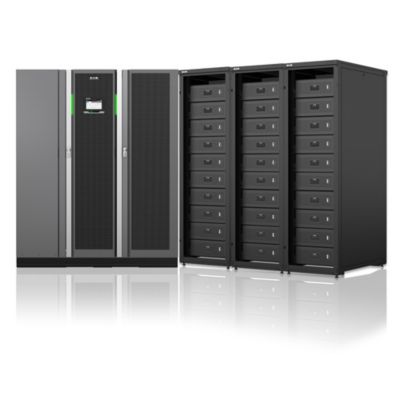
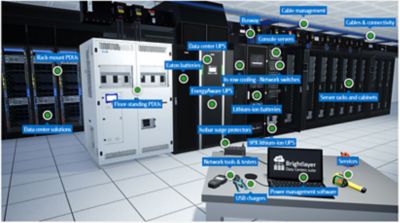
電動車 DC 充電器
X 儲存 — 能源儲存系統
UPS 和其他資料中心解決方案
工程解決方案
Ansys Electronics Desktop (AEDT)™ 軟體提供多種模擬工具,以解決在電子設備中常見的不同類型元件 EMI-EMC 模擬獨特需求。其中包括 PCB 佈局、匯流排、纜線、外殼和電力電子裝置。
AEDT 軟體提供多個 EM 求解器選項,目的在解決擷取與 CE、RE、BCI 和 RI 模擬相關的電磁物理時,所面臨的各種挑戰。此外,AEDT 軟體還提供將高傳真度數學子系統塊 (使用多種工具產生) 順暢整合至單一系統層級建模的能力,讓 Eaton 能夠擷取關鍵的電磁相互作用,而不會損失傳真度。
AEDT 軟體支援自動化指令碼編寫,可根據 Eaton 的需求,自動打造複雜的流程。這能以最少的手動工作量加速模擬設定,以實現最大的分析吞吐量。
雖然 Eaton 持續在關鍵計畫上部署最先進的模擬方法,但 Eaton 與 Ansys 依然在持續合作,使模擬更有效率,也更穩健。
優點
「分析優先」是 Eaton 數位轉型策略的關鍵支柱,透過使用 AEDT 軟體進行 EMI-EMC 模擬,為其產品組合提供利基、尖端的能力。利用 EMI-EMC 進階模擬功能的一些關鍵優勢如下。
- 這些進階功能讓 Eaton 能夠在設計週期的早期階段就識別 EMI-EMC 風險,從而減少設計迭代數量、測試和原型週期,以及相關的前置時間。
- 與標準工業實務相比,透過最佳化運用模擬功能,Eaton 得以降低整體開發成本,並顯著改善設計週期 (從 EMI-EMC 的角度)。
- 此外,其分析可協助選擇最佳的 EMI-EMC 濾波器、設計優異的 PCB 佈局,並提出最佳的電子產品封裝方案。
- 除了節省開發成本之外,最佳磁性設計也能降低物料清單 (BoM) 成本。
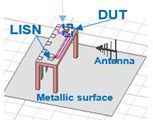
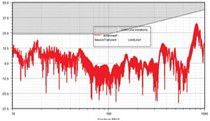
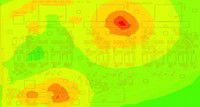
模擬設定 — Ansys HFSS 軟體
模擬輻射雜訊與頻率
電磁近場雜訊圖 — Ansys SIwave 結果
讓我們開始吧
如果您面臨工程挑戰,我們的團隊將隨時為您提供協助。憑藉豐富的經驗和對創新的承諾,我們邀請您與我們聯絡。讓我們共同合作,將您的工程障礙轉化為成長和成功的機會。立即與我們聯絡,開始對話。